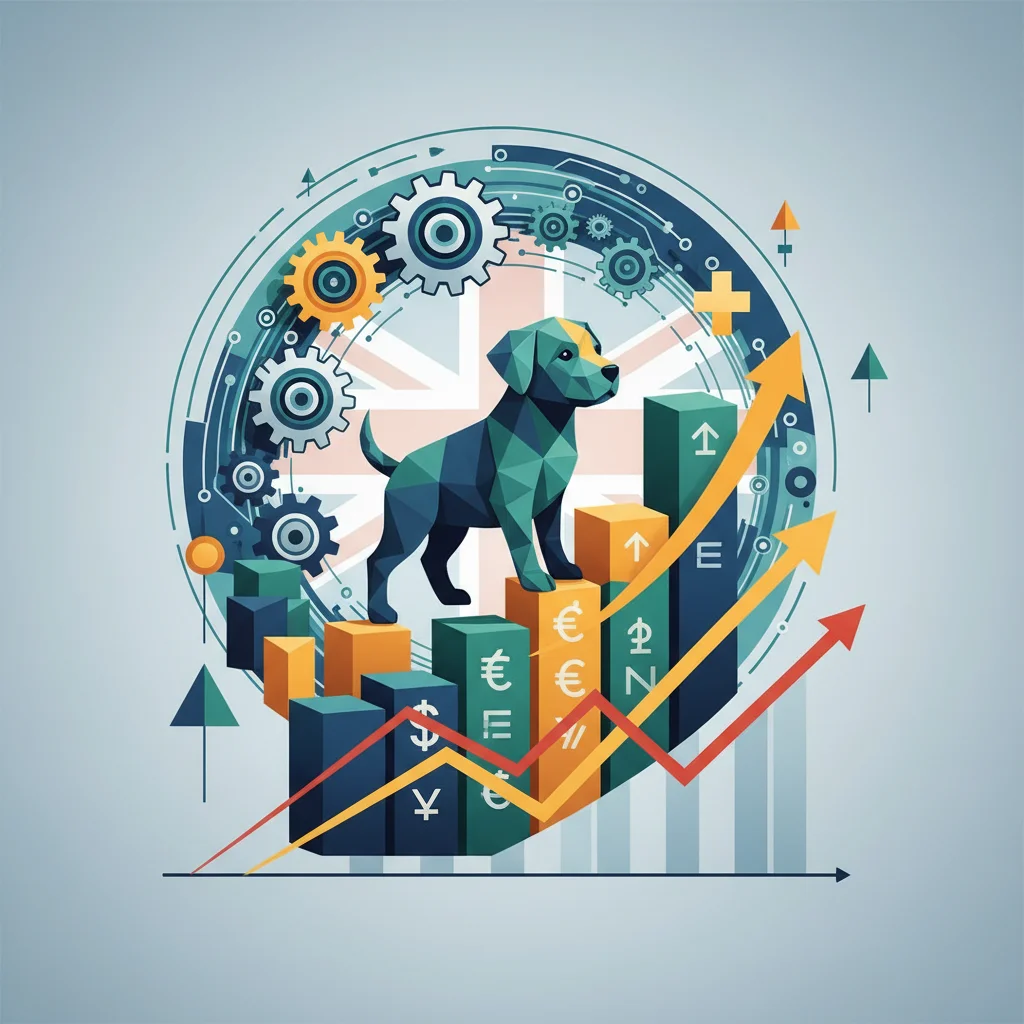
The Price of a Puppy: Why the UK’s Vet Industry Is a Crucial Case Study in Market Economics and Investing
In the intricate world of finance and investing, market signals can emerge from the most unexpected places. While analysts are accustomed to scrutinizing earnings reports from tech giants or tracking commodity futures, a recent development in the United Kingdom’s veterinary sector offers a powerful lesson in market dynamics, regulatory risk, and the fundamental principles of economics. The UK’s Competition and Markets Authority (CMA) has fired a warning shot across the bow of the rapidly consolidating vet industry, proposing that clinics be required to publish their prices. This isn’t just about the cost of a check-up for your pet; it’s a compelling case study on price transparency, market concentration, and the potential impact on a multi-billion-pound industry that has become a hotbed for private equity and stock market investment.
The core finding from the CMA’s review is stark: pet owners are paying significantly more at clinics owned by large corporate groups. The investigation revealed that prices are, on average, 16.6% higher at large vet groups compared to their independent counterparts. This isn’t a random fluctuation; it’s a symptom of a market structure that has shifted dramatically over the past decade, raising critical questions for consumers, business leaders, and investors alike. Understanding why this is happening, and what comes next, provides invaluable insight into the delicate balance between free-market capitalism and regulatory oversight.
An Economic Diagnosis: Market Failure in the Pet Care Aisle
At its heart, the situation in the UK veterinary market is a textbook example of several classic economic concepts that often lead to poor consumer outcomes. For professionals in finance and economics, these patterns are familiar, whether they appear in banking, telecommunications, or, in this case, animal healthcare.
First is market concentration. A decade ago, the UK vet market was highly fragmented, dominated by small, independent practices. Today, an estimated 60% of vet practices are owned by just six large corporate groups, including well-known names like CVS Group, IVC Evidensia, and Pets at Home. This rapid consolidation, often fueled by private equity investment, has created a near-oligopoly in many local areas. When a few firms control the majority of the market, competitive pressure to keep prices low naturally diminishes. This consolidation is a classic roll-up strategy, attractive to investors for its potential to create economies of scale and increase pricing power.
Second, we see a profound case of information asymmetry. Pet owners are rarely in a position to “shop around” for veterinary services, especially during an emergency. They lack the specialized knowledge to evaluate the necessity of a proposed treatment and, crucially, they lack access to clear, comparable pricing information. This information gap gives the provider—the vet clinic—significant leverage. The CMA’s proposal for mandatory price lists is a direct attempt to correct this asymmetry, empowering consumers and introducing a level of competition that is currently absent.
Finally, the industry benefits from inelastic demand. When a beloved pet is sick, cost becomes a secondary concern for most owners. This emotional factor means that demand for veterinary services does not decrease significantly even as prices rise. For investors, this is a dream scenario, creating a stable, predictable revenue stream. For the economy and consumers, however, it can lead to price gouging and an inefficient allocation of resources. The CMA’s intervention suggests a belief that the market is failing to self-correct due to these inherent structural issues.
The Investment Thesis: Private Equity, Public Markets, and the Vet Roll-Up
The consolidation of the veterinary industry didn’t happen by accident. It has been a deliberate and highly successful strategy for investment firms. For those in the world of investing and finance, the appeal is obvious:
- Recurring Revenue: Pets require regular check-ups, vaccinations, and treatments, creating a non-discretionary, recession-resistant revenue stream.
- Demographic Tailwinds: Rising pet ownership, particularly post-pandemic, and the increasing “humanization” of pets mean owners are willing to spend more on their animals’ health.
- Fragmentation Opportunity: A previously fragmented market of independent practices was ripe for a “roll-up” strategy, where a larger company acquires smaller ones to build scale and market share.
This has made veterinary groups a darling of private equity and a notable feature on the stock market. CVS Group plc, for example, is listed on the London Stock Exchange and has been a significant player in this consolidation. However, the CMA’s review introduces a critical variable into the investment thesis: regulatory risk. The very factors that made the industry so attractive—pricing power and lack of transparency—are now under threat. Any investor holding shares in these companies, or any finance professional involved in their M&A activity, must now recalibrate their models to account for potential margin compression if these new regulations are implemented.
Here is a simplified look at the market dynamics highlighted by the CMA’s findings:
| Market Characteristic | Impact on Pet Owners | Implication for Investors & Businesses |
|---|---|---|
| High Market Concentration (60% by 6 firms (source)) | Reduced choice, less price competition | Increased pricing power, higher margins, but significant regulatory scrutiny. |
| Information Asymmetry | Inability to compare prices, potential for overpaying | Ability to maintain high prices without direct comparison; a business model vulnerable to transparency mandates. |
| Inelastic Demand | Pressure to accept high costs, especially in emergencies | Stable, predictable revenue streams, less sensitive to downturns in the general economy. |
| Proposed CMA Remedy (Price Transparency) | Empowerment to make informed decisions, potential for lower costs | Threat to profit margins, potential for increased competition, may force a shift in business strategy. |
Fintech and Financial Technology: An Unlikely Prescription?
The challenges in the veterinary market—opacity, complex billing, and high out-of-pocket costs—are precisely the kinds of problems that the financial technology (fintech) sector was built to solve. While not a traditional focus area, the intersection of pet care and fintech presents a significant opportunity. The CMA’s push for transparency could be the catalyst that accelerates innovation in this space.
Imagine Pet-Tech platforms that act as aggregators, allowing owners to compare costs for specific procedures across local clinics in real time. This would introduce the same level of transparency to veterinary care that we now take for granted in booking flights or hotels. Advanced fintech solutions could also streamline the insurance claims process, offering instant approvals and direct payments to vets, removing a major friction point for consumers. This evolution in “Insurtech” is already happening in human healthcare and is a natural fit for the pet market.
Looking further ahead, one could even speculate on the role of emerging technologies like blockchain. A secure, decentralized ledger for a pet’s health records, accessible by any provider the owner authorizes, could drastically improve data portability and continuity of care. While still a nascent concept, it highlights how innovations rooted in the world of finance and technology can be applied to solve real-world consumer problems, fostering the very competition the CMA desires.
Broader Lessons for Business Leaders and the Economy
The story of the UK’s vet industry is more than just an isolated event. It is a microcosm of a broader trend seen across various sectors of the economy, from healthcare to financial services. It serves as a critical reminder for investors and business leaders about the lifecycle of a roll-up strategy.
The initial phase of consolidation often yields massive returns as inefficiencies are eliminated and scale is achieved. However, as a market approaches oligopoly, the risk of regulatory intervention grows exponentially. Any business model that relies on a lack of transparency or consumer inertia is inherently fragile. The most sustainable long-term strategies are built on clear value propositions, not on exploiting information gaps. This situation underscores the importance of incorporating Environmental, Social, and Governance (ESG) principles into investment analysis. The “Social” component is not just about ethics; it’s about recognizing that business practices seen as unfair to consumers can eventually translate into tangible financial risk via regulation and reputational damage.
For those involved in trading on the stock market, news like the CMA’s review is a prime example of how non-financial events can be a powerful catalyst for price movement. The announcement of the full market investigation caused a notable dip in the share price of CVS Group, demonstrating the market’s sensitivity to regulatory threats. This is a clear signal that the era of unchecked price increases in the veterinary sector may be coming to an end, a factor that must be priced into any future valuation.
Conclusion: A Market on a Leash
The UK Competition and Markets Authority’s intervention in the veterinary sector is a pivotal moment. It’s a clear signal that regulators are willing to step in when market concentration and a lack of transparency harm consumers. For pet owners, it promises a future of greater choice and fairer pricing. For the wider business and finance community, it is a powerful and timely lesson. It demonstrates that the principles of economics are universal, and that no industry is immune to the consequences of market failure. The most successful investors and business leaders will be those who heed this warning, recognizing that sustainable growth is built not on exploiting market opacity, but on delivering transparent value in a competitive, well-functioning economy.


